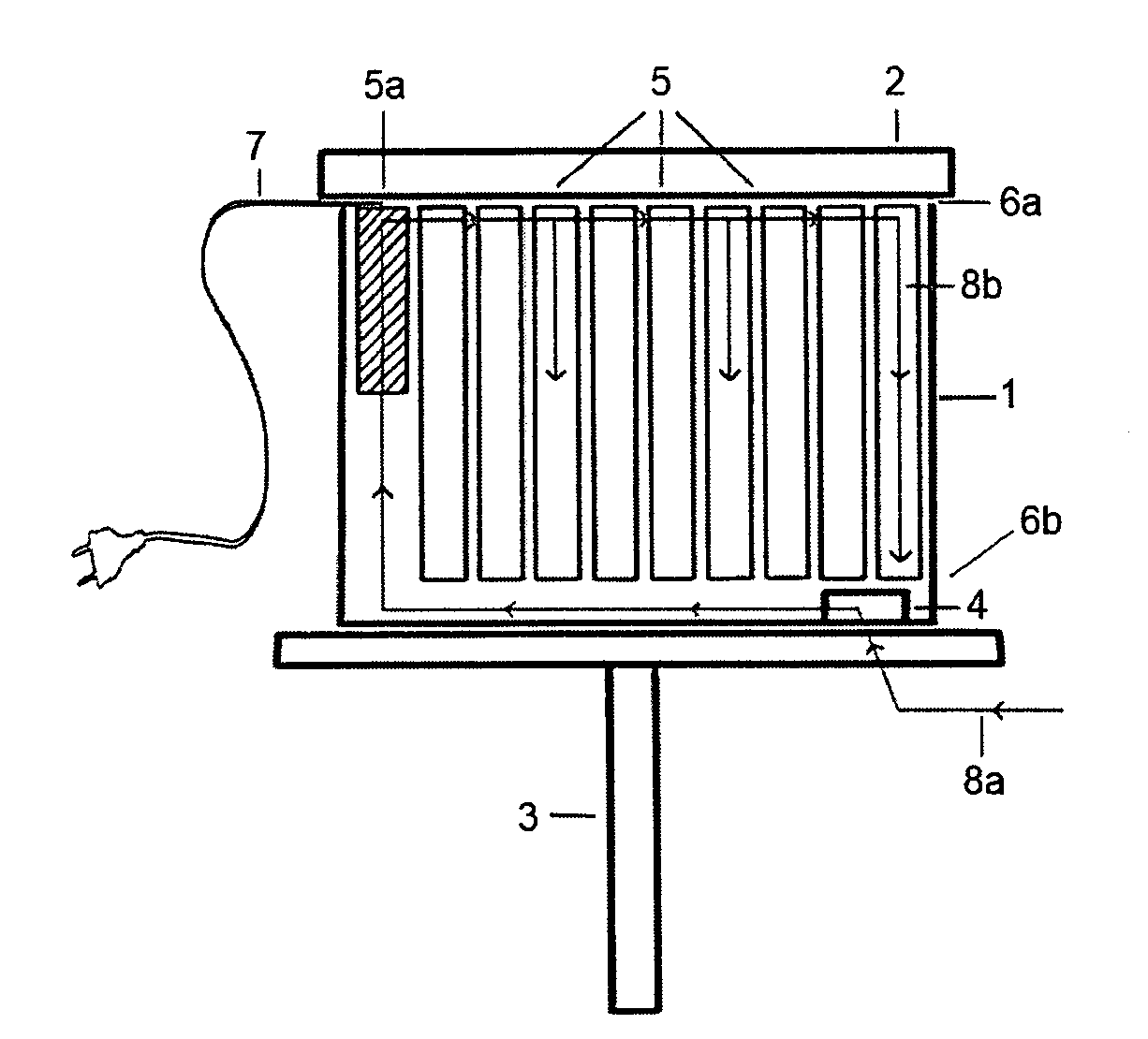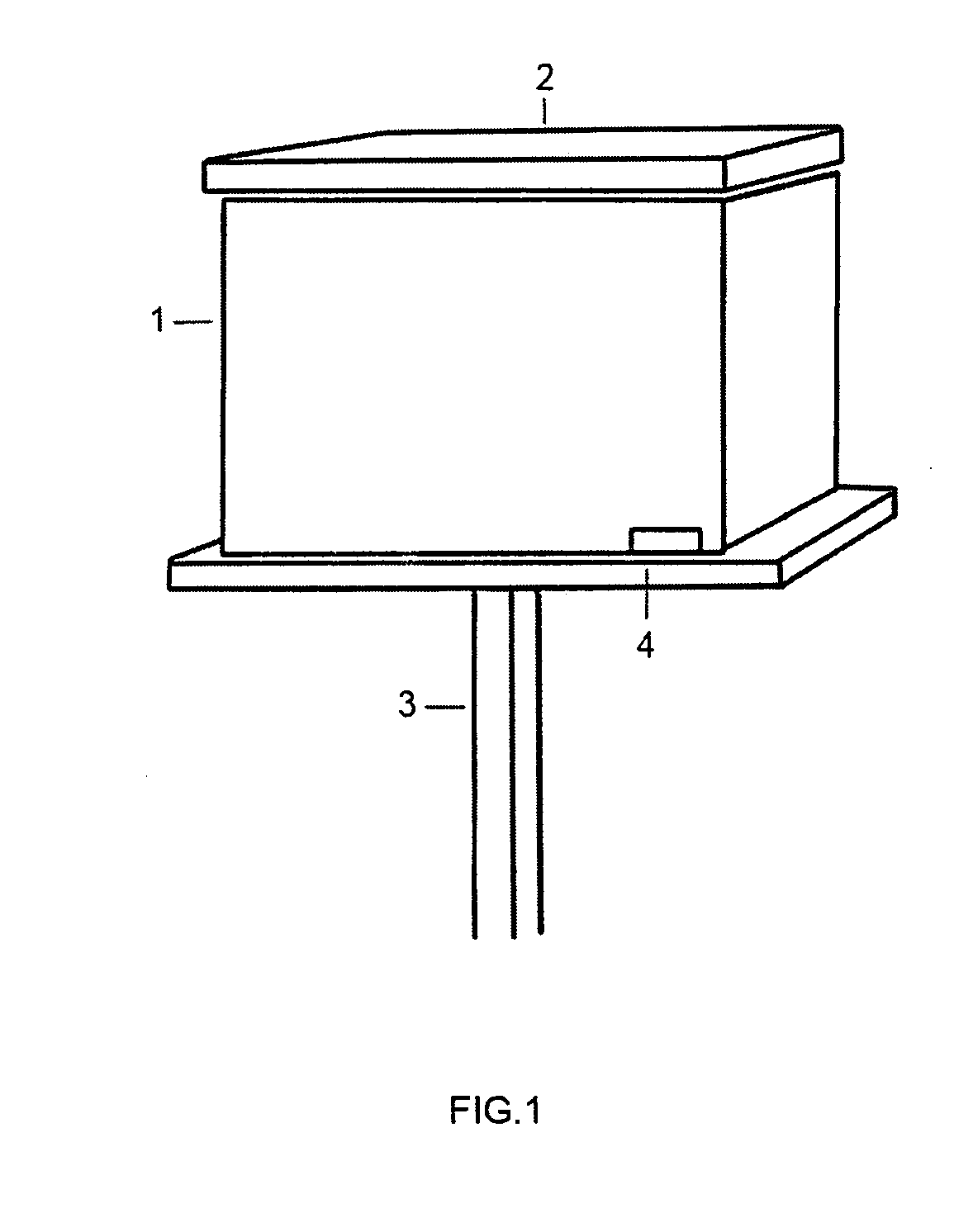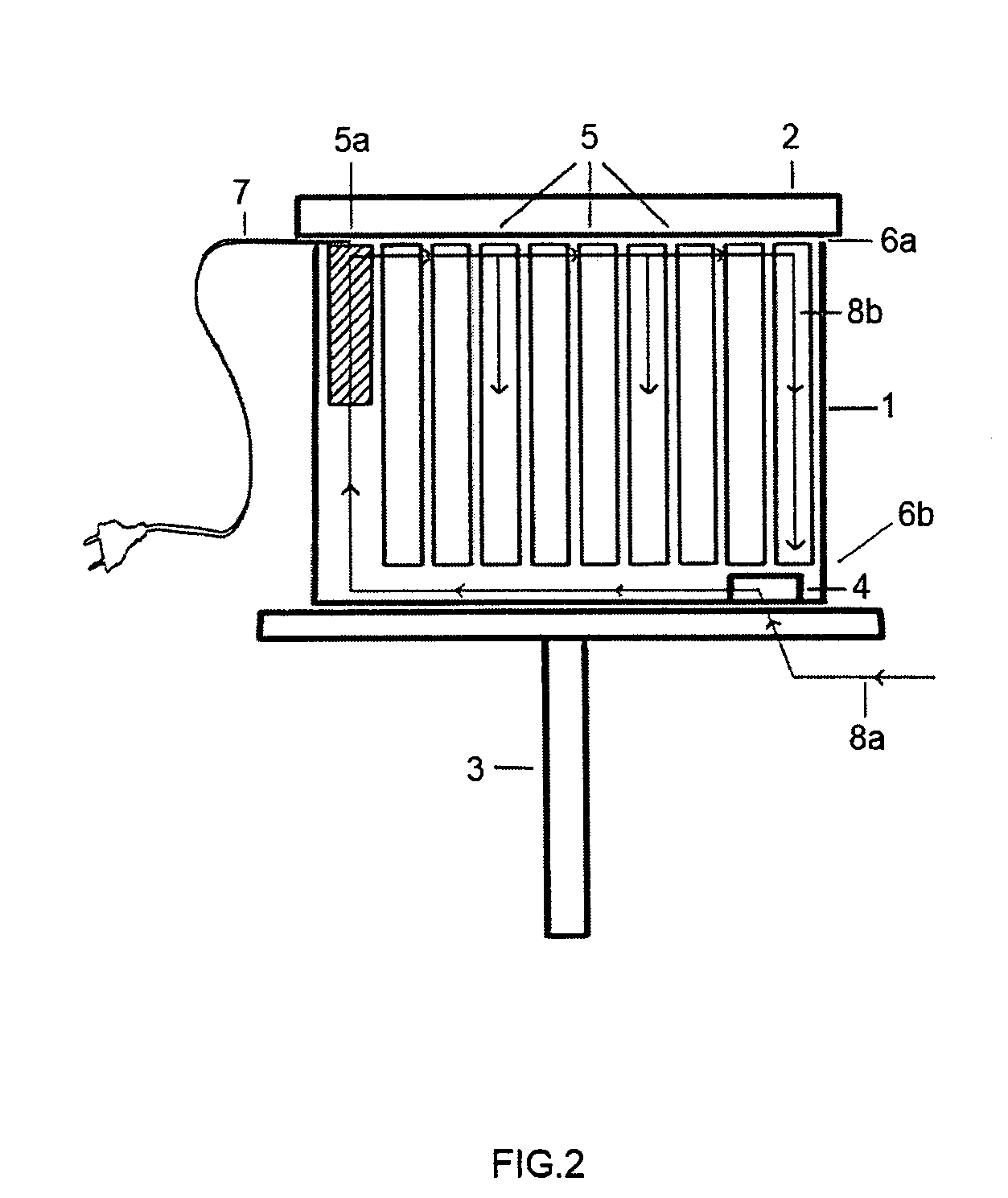Device for hygienizing, warming, and dehumidifying a beehive
- Summary
- Abstract
- Description
- Claims
- Application Information
AI Technical Summary
Benefits of technology
Problems solved by technology
Method used
Image
Examples
Embodiment Construction
[0062]One aspect of the invention is a device for the optimization of organic bee produce.
[0063]Another aspect of the invention is a process for optimization of organic bee produce with the aid of the inventive device.
[0064]Still another aspect is that the device and process of the invention, since they keep the bees of a bee box in a healthy state throughout the whole year, lead to increased yields in the pollination of agricultural cultures relative to state-of-the-art bee boxes, that is, those from which the present device is absent.
[0065]The inventive device is applicable to all the usual kinds of bee boxes, or nest boxes such as Langstroth, Schirmer e Curtinaz, as such or adapted in any way.
[0066]Organic bee produce of improved yield obtained from the insertion of the inventive device in a bee box include honey, propolis (conventional and green), royal jelly, wax, pollen, bee venom and any similar related bee produce.
[0067]The present invention has been developed based on the p...
PUM
 Login to View More
Login to View More Abstract
Description
Claims
Application Information
 Login to View More
Login to View More - R&D
- Intellectual Property
- Life Sciences
- Materials
- Tech Scout
- Unparalleled Data Quality
- Higher Quality Content
- 60% Fewer Hallucinations
Browse by: Latest US Patents, China's latest patents, Technical Efficacy Thesaurus, Application Domain, Technology Topic, Popular Technical Reports.
© 2025 PatSnap. All rights reserved.Legal|Privacy policy|Modern Slavery Act Transparency Statement|Sitemap|About US| Contact US: help@patsnap.com



